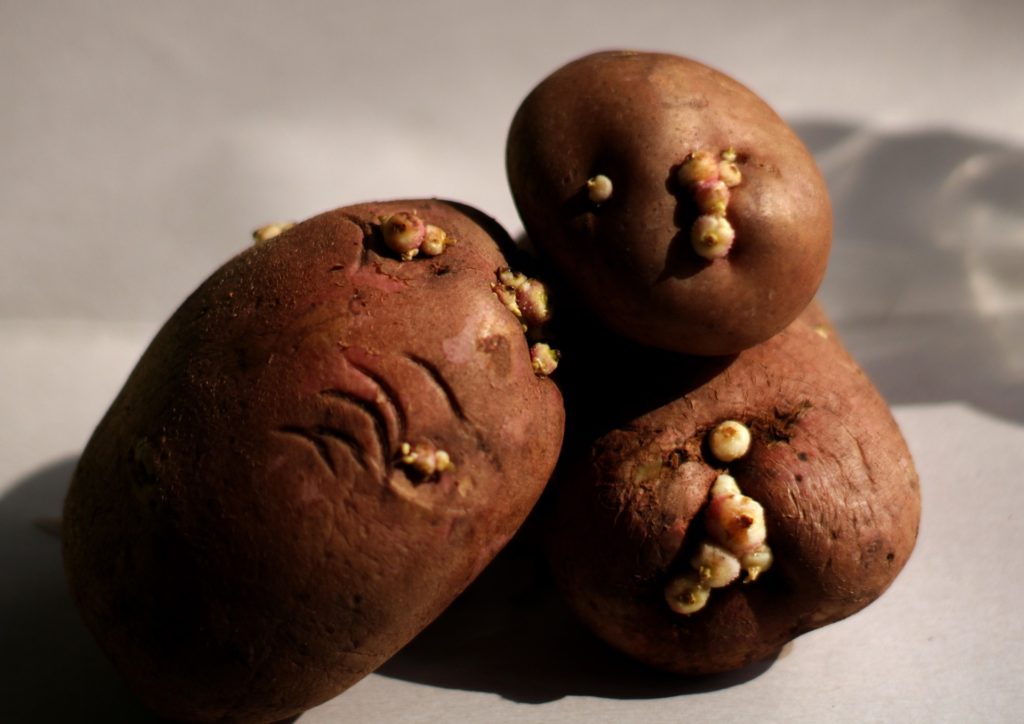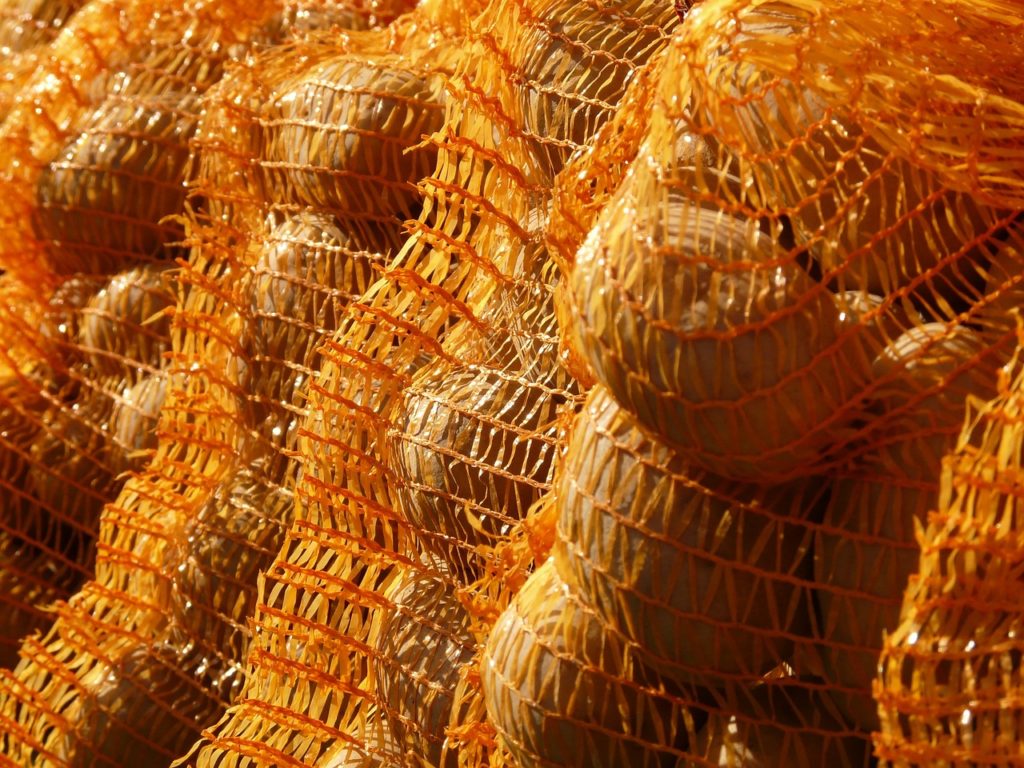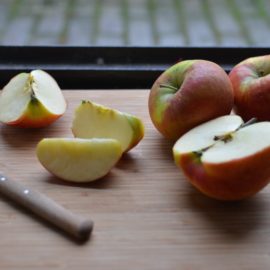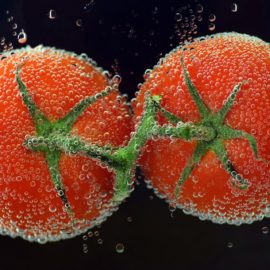
Potatoes are one of the most consumed vegetables around the world. It is the 3rd most important crop in the world, after rice and wheat. In the United States alone, the starchy vegetable is the most consumed at 62% in 2021, according to Statistica. One of the reasons for this is the love for foods such as mashed potatoes and French fries. Because of this, the demand for potatoes is steadily high. To keep up with the demand, there should an abundant supply of potatoes. To do this, farmers and processors must do their best to minimize post-harvest losses. Causes of post-harvest losses in fruits and vegetables vary. In potato production, sprouting is one of the reasons for this.
In this post, we’ll discuss how sprouting occurs as well as the measures to suppress it.
HOW SPROUTING OCCURS
The primary reason potatoes sprout is their innate survival instinct. Sprouting allows the potato to reproduce and give rise to a new plant. Under favorable conditions, such as warmth, moisture, and access to light, the potato initiates sprouting as a means of generating offspring.
The process of sprouting begins when a potato detects conducive environmental conditions. Moisture is a critical factor that activates enzymes within the potato, initiating metabolic processes. The presence of moisture causes the potato to absorb it, softening the tissue and awakening the dormant buds. Once the buds are activated, they start elongating and pushing through the skin of the potato, giving rise to sprouting.
You might also like: Why Soaking Potatoes In Water Is Important
Temperature plays a crucial role in the sprouting of potatoes. Cold temperatures act as an inhibitor, preventing sprouting, while warmer temperatures, typically ranging from 50°F (10°C) to 70°F (21°C), stimulate the growth of sprouts. Maintaining an optimal temperature range is important to avoid excessive elongation of sprouts, as this can lead to weak and leggy growth.
In addition to temperature, light also impacts potato sprouting. Exposure to light triggers the accumulation of a hormone called gibberellin in the sprouts, promoting elongation. Storing potatoes in a dark environment keeps the sprouts short and pale. However, prolonged exposure to light can cause the sprouts to turn green, indicating the production of solanine, a toxic compound that renders the potato inedible.
Sprouting has several detrimental effects on potatoes. It leads to increased respiration and moisture loss, resulting in reduced crop quality and value. The sprouts’ growth causes elevated levels of toxic glycoalkaloids, accelerated breakdown of starch leading to undesirable reducing sugars, and a decline in vitamin content. Moreover, sprouting accelerates the physiological aging of the potato, negatively affecting its appearance. For more on this, read this article.
IDENTIFYING AND REMOVING SPROUTED POTATOES

Sprouted potatoes are easy to spot, as they display distinctive characteristics that set them apart from fresh ones. Identifying these potatoes early on can help prevent potential health risks associated with their consumption.
To identify sprouted potatoes, look for long, pale shoots protruding from the eyes of the potato. The skin of the sprouted potato may also appear wrinkled or shriveled. In some cases, the sprouts may have even developed leaves or small roots. If any of these signs are present, it is clear that the potato has sprouted and should be dealt with promptly.
Once you’ve identified sprouted potatoes, it’s crucial to take immediate action to remove them from your pantry or storage area. These potatoes are more prone to spoilage, and leaving them among other fresh potatoes can accelerate the deterioration process, leading to potential food waste.
To properly dispose of sprouted potatoes, consider using a compost pile if available. Composting allows the potatoes to break down naturally and return nutrients to the soil. Alternatively, discard the sprouted potatoes in a manner that prevents animals from accessing them. While they may no longer be suitable for consumption, they can still serve a purpose in contributing to environmental sustainability.
EATING AND COOKING SPROUTED POTATOES
Although sprouted potatoes are not the best option for direct consumption, there are various ways to salvage and utilize them effectively.
One approach is to cut and cook the sprouted potatoes. If only the eyes have sprouted, you can salvage the rest of the potato by carefully cutting away the sprouted areas and any solanine. After removing these parts, you can proceed to cook the potato as you would with fresh ones. Boiling, mashing, or using them in soups or stews are all great options for salvaging sprouted potatoes.
You might also like: French Fries And The Science Behind
If you happen to have a dehydrator, you can salvage sprouted potatoes by making them into potato flour.
Start by slicing the sprouted potatoes into thin rounds and dehydrate them until they are thoroughly dried.Then grind the potato slices into a fine powder using a food processor. A blender will also do. This homemade potato flour is an excellent gluten-free alternative in baking.
STORING POTATOES TO PREVENT SPROUTING
In large-scale potato processing, ionizing radiation at low doses (0.1-0.2 kGy) is an effective method for preventing sprouting. Irradiation does this by breaking down the DNA and other cellular components in the potato’s eyes. As a result, the hormones that trigger sprouting are deactivated or destroyed, significantly reducing or preventing the growth of sprouts.
At home, you can also prevent sprouting by following these simple storage tips:
- Clean the potatoes before storing: Thoroughly clean the potatoes by using a brush or vegetable scrubber to remove any dirt or debris from their surface. This step is crucial because dirt can harbor bacteria and contribute to early spoilage. After cleaning, allow the potatoes to dry completely before placing them in storage.
- Store potatoes in a cool, dry place: An ideal storage location for potatoes is a cool and dark place with a consistent temperature ranging from 45°F (7°C) to 55°F (13°C). Excessive exposure to light and warm temperatures can promote the formation of chlorophyll, which is not desirable.
- Use breathable storage containers: Avoid using plastic bags or airtight containers for potato storage, as these can trap moisture, creating a favorable environment for sprouting. Instead, opt for breathable storage containers like burlap sacks or mesh bags. These containers allow proper air circulation, reducing the chances of excess moisture buildup and sprouting.
- Divide and conquer: If you have a large quantity of potatoes, it’s advisable to store them in smaller batches. By doing this, you can contain any potential sprouting to a limited number of potatoes, preventing it from spreading to the entire batch. This division helps minimize wastage, ensuring you can use the unaffected potatoes before they spoil.
- Maintain regular spoilage checks: Check the potatoes in storage frequently for any signs of sprouting or rotting. To stop the other potatoes from being spoiled, throw away any potatoes that have already sprouted.
References:
J. Singh, L. Kaur (2016). Advances in Potato Chemistry and Technology (2nd edition). Academic Press.
H. Ramaswamy (2014). Post-harvest Technologies of Fruits & Vegetables. DEStech Publications, Inc.
A. Chakraverty (2014). Postharvest Technology and Food Process Engineering. CRC Press.


